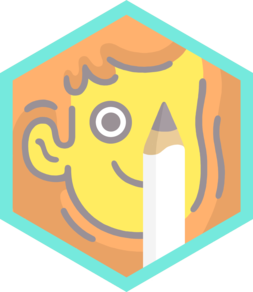Drawing An Adult
Learn step-by-step how to draw an adult figure using simple shapes, proportions, facial features, clothing details, and shading to create a realistic portrait.


Step-by-step guide to draw an adult
Step 1
Gather all your materials and find a flat surface where you can draw comfortably.
Step 2
Lightly draw an oval for the head and add a vertical centerline and a horizontal eye line across the middle of the oval.
Step 3
Use your pencil as a measuring tool and mark a vertical guideline under the head that is about seven head-lengths long to set the adult’s height.
Step 4
Sketch the ribcage as a slightly rounded rectangle under the head and place a wider oval for the hips below it along the guideline.
Step 5
Draw a short neck connecting the bottom of the head to the top of the ribcage.
Step 6
Draw straight lines for the arms and legs and add small circles at the shoulders elbows hips and knees to show joints.
Step 7
Add simple shapes for hands and feet such as mitt shapes for hands and elongated ovals for feet at the ends of the limbs.
Step 8
Place facial features by drawing the eyes on the eye line the nose about one head-quarter down from the eye line and the mouth halfway between the nose and chin.
Step 9
Block in the hairline and draw the overall hairstyle as one simple shape that sits on the head.
Step 10
Draw clothing outlines over the body shapes and add a few simple lines to show folds or seams in the fabric.
Step 11
Carefully erase extra guidelines and strengthen the final lines of your drawing to make the figure look clean.
Step 12
Add shading by darkening areas under the chin inside the hair and in clothing folds and gently blend with your stump or tissue for a more realistic look.
Step 13
Colour any areas you like with your colouring materials and make any final touches.
Step 14
Take a photo or upload your finished portrait and share your creation on DIY.org
Final steps
You're almost there! Complete all the steps, bring your creation to life, post it, and conquer the challenge!


Help!?
What can I use if I don't have a blending stump or tissue for shading?
Use a clean fingertip, a folded tissue, a cotton swab, or a lightly rolled piece of paper to gently blend the shading under the chin, inside the hair, and in clothing folds as described in the 'Add shading' step.
My figure looks out of proportion—how do I fix it without starting over?
Re-measure with your pencil as a measuring tool along the vertical guideline to confirm the seven head-lengths, then nudge the ribcage and hips into their proper positions before carefully erasing extra guidelines.
How can I adapt this activity for younger or older children?
For younger kids skip the seven-head measurement and have them draw a simple oval head, straight limb lines with mitt shapes for hands and elongated ovals for feet, while older kids should follow all steps including drawing joint circles, adding clothing folds, and shading with a stump or tissue.
How can we personalize or extend the portrait once the basic drawing is done?
Personalize by using a photo reference for facial features, blocking in a distinct hairstyle, adding patterned clothing lines and extra shading inside the hair and clothing folds, then colour the drawing and upload your finished portrait to DIY.org.
Watch videos on how to draw an adult
20 EASY Drawing Tips For Beginners (to level up your skills FAST!)
Facts about portrait drawing for kids
✏️ Gesture drawings are quick (often 30–60 seconds) sketches that capture the body's movement and energy before details.
👚 Clothing folds follow gravity and movement: they hang down, bunch where fabric is pulled, and help show posture.
🎨 Most adult figures are drawn about 7½ to 8 heads tall — artists use the "head" as a measuring unit to keep proportions consistent.
🕯️ Shading with light and shadow can turn a flat outline into a 3D-looking person — one light source can change the whole mood.
👀 The eyes usually sit about halfway down the head, not near the top — a great trick for placing facial features!
How do you draw an adult figure step-by-step?
What materials do I need to draw an adult?
What ages is drawing an adult figure suitable for?
What are the benefits of teaching children to draw adults?


One subscription, many ways to play and learn.
Only $6.99 after trial. No credit card required



